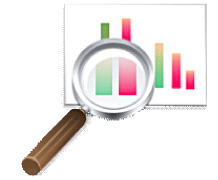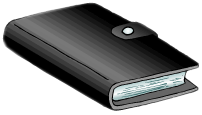

Pain Education - Learning About Chronic Pain
This chapter mainly explains some basics about chronic pain. It also discusses the
following topics:
• How chronic pain develops
• The differences between every day (acute) pain and chronic pain
• A description of the Gate Control Theory of Pain to better understand why
some things such as stress, anxiety, and depression can affect your pain
• A general overview of pain medications
• Myths and facts about addiction to chronic pain medicines
• Statistical findings and myths about chronic pain

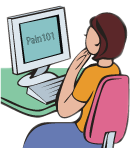
Goals

Learn


About what chronic pain is and how it is different from acute pain
How to control your chronic pain
Be able to answer questions in this chapter and talk with your coach
Read
Do

Goal
Be able to recognize what helps reduce your pain and what makes it worse
PACE - Picking a Problem
-
Introduction

It is time to do some detective work and pick a problem that you would like to work on. This is the first step of PACE! This information in this section fits most situations, but you are going thought may be different. If the doctor or nurse tells you to do something else, please follow what they say.
Potential problems you may be experiencingClick on the video to learn more about picking a problem



I don’t understand why I still have back pain when my injury happened over five years ago



When I feel pain I don’t want to exercise. I think it will make things worse
I used to be cheerful person, but ever since I had my back injury I often feel down
My husband says that ‘pain is pain’ and there is no difference between his broken toe and my chronic back pain. How do I explain the difference?
I am afraid that I might become addicted if I keep taking medication for my pain
My medication doesn’t seem to be working. This is so frustrating!

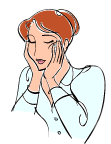
-
Facts about pain
More and more research is being done across the world to help us understand pain and how it affects people. We have also learned a great deal from people who have chronic pain that we work with the Multidisciplinary Pain Centre.
Click on the lightbulb icon below to read about a few things that we have learned from scientific findings and from our clinical experiences. You will need Adobe Reader to view the document. If you do not have Adobe Reader on your computer you can download it for free at www.adobe.com/products/acrobat/readstep2.html.

-
Acute vs Chronic Pain
Click on the icon below to read about the differences between acute pain and chronic pain. Again, you will need Adobe Reader to view the document. If you do not have Adobe Reader on your computer your can download it for free at www.adobe.com/products/acrobat/readstep2.html.
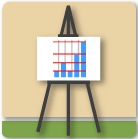
-
Chronic pain diagram
-
Pain Gates
More and more research looks at why a person can have so much pain
wen their doctors can’t find any specific visible problems with their body.Some of the research that has been especially valuable in helping us
understand chronic pain has suggested that pain is controlled in our
bodies by a series of mechanisms that act like gates. One theory that
has come from this research is called the Gate Control Theory.Here are a few things that we know from the Gate Control Theory
• From many years, pain was thought to be felt in the body simply
through the sending of pain messages along unchanging nerve
pathways to the brain. Like a telephone system with a central
exchange in the brain• However, although this idea made some sense, when we look at
how pain is experienced in reality, it is not explained very well by
this simplified explanation• One theory that seems to account for a lot of what we see happening in people with chronic pain is the Gate Control Theory of Pain
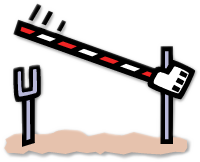
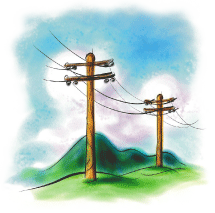
-
Gate Control Theory of Pain
In its simplest form, the Gate Control Theory of Pain is as follows:
• Nerves from all parts of the body run to the spinal cord which is the first main meeting point for the nervous system. Nerve impulses are carried from the injured body part or disease to the brain through the spinal cord
• Some of the cells in the spinal cord act like gates
• The spinal cord is thought to have a series of gates into which incoming pain messages pass from all over the body
The kind of messages that come out from the gates to reach the brain depends on a number of other factors:
• If the gates are more open, lots of pain messages pass through to the brain and the person experiences high levels of pain
• If the gates are more closed, fewer messages can get through and the person experiences less pain
The gates can be open or shut by different amounts, allowing various amounts of pain to be experienced. These gates can also make the pain message stronger and increase the signal of pain
There are many interesting examples of how changes in the spine and brain lead to change in a person’s pain experience:
• Phantom pain: Some people continue to feel pain in their arm or leg even after that arm or leg has been amputated. This is
called phantom limb pain and happens because of changes in the spinal cord and brain• Some people like soldiers wounded in a battle or athletes injured in a big game, may not even notice the pain from their injury
until much later
-
The Nervous System
2. The Peripheral Nervous System (PNS)
This part of the nervous system includes the
nerves and neurons (nerve cells) that are on
the outside of the central nervous system to
serve the limbs and organs
The nervous system is divided in two:
1. The Central Nervous System (CNS)
This is the largest part of the
nervous system. It includes• The brain
• The spinal cord

When experiencing chronic pain, the peripheral nerve signals that start from the location of injury eventually lead to long-term changes in the central nervous system and add to increased and constant pain.
-
Pain medication: Analgesia
There are three primary analgesic classes used in Multidisciplinary Pain Centre:
Opioids
A family of drugs that reduce pain by working on special pain receptors in the central nervous system. Codeine, Morphine, Methadone, Fentanyl, and Oxycodone are all examples of opioid drugs
Non-opioids
These types of drugs work more directly on the injured body part. They work as an anti-inflammatory and also decreases pain. Examples of non-opioid drugs are Acetaminophen (Tylenol), NSAIDs (Aspirin, Naproxen, Ibuprofen) and COXIBs (Celebrex)
Adjuvants
These are drugs that weren’t designed for pain relief, but that improve pain as a side effect. Examples of adjuvants are antidepressants (Elavil, Zoloft), muscle relaxants (Robaxin, Norflex), anticonvulsants (Gabapentin), and anti-anxiety drugs (Diazepam, Xanax)
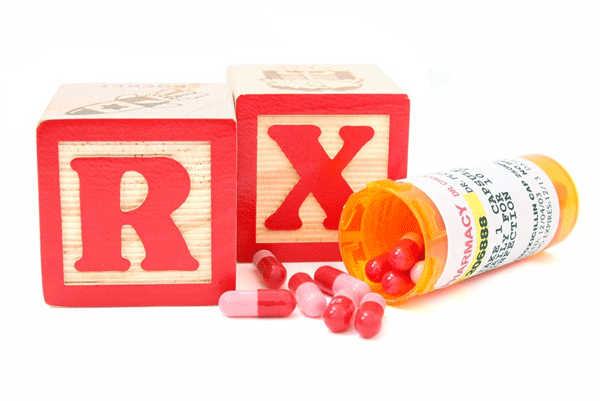
-
Addiction
C
C
C
Many medications are prescribed to chronic pain patients as part of their treatment. Some people hesitate to take pain medication because they fear addiction. It is important to clarify what addition is and what it isn’t.
Read the definitions for Physical Tolerance, Physical Dependence, and Addiction on the next page. It is important to be able to tell the difference between each of these
Physical Tolerance
When your body has adapted to a drug and it doesn’t seem to work as well over time. This doesn’t mean your body is addicted; it only means your body has built up a tolerance to a certain dose of medication. A common result is that a person’s dose of medication needs to increase to have the same effect
Physical Dependence
When your body feels like it doesn’t work properly without a drug. When you stop taking the drug you have withdrawal symptoms and you feel sick without it. This usually goes away after a few days and it does not mean that you are addicted to the medicine
Addiction
A constant use of habit-forming substance where the user knows it is harmful but still uses it
Unless you have a substance abuse problem to begin with, you are very unlikely to
become addicted from taking prescribed pain medicationsThe 3 C’s of Addiction
Loss of Control
Compulsive use
Consequences (use despite harm)
These are the 3 common signs that a person has an addiction problem. You could be addicted if you:
• Use a drug despite the consequence
• Show no control over how much medication you can use
• Use as much medication as you can as often as you can
If you feel like this has happened to you, please talk to someone who can get you some help. You can find some helpful phone numbers by clicking on the red phone icon in the lower left hand corner of the website.
For more information on the differences between addiction, physical tolerance, and physical dependence, please click here.
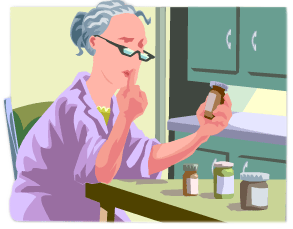
-
Myths and Facts
There are many common thoughts about chronic pain and it is not easy to know which ones are true and which ones are false. You may have heard certain things about chronic pain or maybe you are experiencing your own difficulties. Relying on false information can be serious and may lead to dangerous situations.
Please click on the icon to see a list of common thoughts on chronic pain and see whether that statement is true or false. You might be surprised about certain answers; it helps to read the explanation to see why that common thought turned out to be either true or false

-
Statistics
Did you know?
For some interesting statistics on chronic pain, please look at the following findings gathered by Statistics Canada. You might be surprised!
In terms of health care dollars, chronic pain ranks higher than the cost of cancer and heart disease combined
Back problems and arthritis or rheumatism are the leading conditions associated with chronic pain
Chronic pain is the most frequent cause of suffering and disability that seriously impairs quality of life
Almost 3.9 million (17%) of Canadians over 15 years old experienced some chronic pain or discomfort in their lifetime
Click on the video to hear more
-
Example

Kelly picks a problem to work on...
When I am in pain I can’t help but feel tense and when I feel tense, my pain
gets much worse. I don’t know how to stop this cycle!
-
Worksheet
Now that you have read the Picking a Problem section, start thinking of ways that you may be able to solve the problem you picked in this section.
Click on the icon below to access the worksheet for this section. Note: All the worksheets, checklists, diaries, and pain scales inserted in the chapters are for your use only. If you would like to advise or want to show these to a health professional, please feel free to bring a copy to your next appointment at the Pain Clinic.
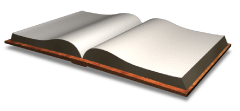
-
Conclusion
You have completed the first part of the Pain Education chapter: PACE – Picking a Problem
Please click the Next button below to continue to the next section: PACE – Acting Upon the Problem.
Or click the Pain Education button above to view the entire contents of the Pain Education chapter.
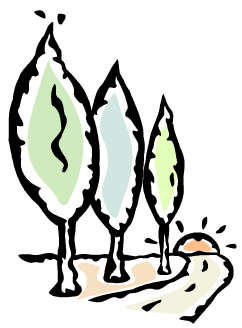
PACE - Acting Upon the Problem
-
Introduction
Even with the greatest plans we can sometimes come across obstacles. Before moving on with a plain, it is important to look at some of the challenges you may be facing. This brings us to the 3rd section of PACE.
The next pages describe some common doubts that other people with chronic pain have shared with us in regards to the challenges they may face.

-
Getting Control over the problem
Now that you have picked a problem to work on, it’s time to decide what to do. Ready... set... action! In this section, the second section of PACE, we will look at things you can do in your everyday life to help improve your quality of life.
Remember earlier in this chapter, there was a section that talked about Pain Gates and Gate Control Theory of Pain? Now it’s time to apply your knowledge. Click on the icon below for a list of different factors that can open and close the pain gates.
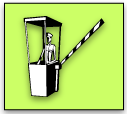
-
Closing the pain gates
Here are some techniques that may help you close the pain gates. Try some of them and see if they reduce the pain that you feel:
Massage
Gentle massage or stroking can be very calming and soothing when you are in pain. There are many specific methods of massage, but it is best to do what you find most effective.
Heat and Cold
Both heat (like a hot water bottle, or heating pad) and cold (like an ice pack) may relieve pain. As with all suggestions, be sure to ask your nurse or doctor first whether you can use this method to help relieve the pain.
Prescription Medications
Always remember to take pain medications as prescribed by your doctor. Pain medication is most helpful when it’s taken regularly. If you are not getting good pain relief from medications, it is important to discuss this with your doctor. It can sometimes be hard to measure what good pain relief is, so you may want to use the number scale found at the end of the chapter.
-
Stepping up to stop the pain
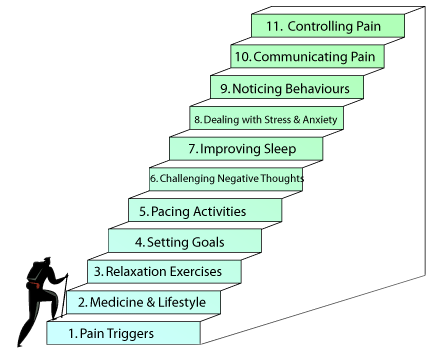
We identify 11 essential steps to help you find control in your life
and not let pain take over. All of these steps are covered
throughout the Pain 101 program. -
Example


Kelly takes action
I asked my doctor why I am still experiencing pain when my accident
happened so long ago. He briefly explained that I am experiencing chronic
pain and gave me some pamphlets and a list of book references I could read
to better understand my condition. My doctor has also referred me to a pain
centre where health professionals give me advice on pain management and
inform me about different pain treatment options. -
Worksheets
Now that you have read the Acting upon your problem section, start thinking of ways that you may be able to solve the problem you picked in the last section.
Click on the icon below to access the worksheet for this section. Note: All the worksheets, checklists, diaries, and pain scales inserted in the chapters are for your use only. If you would like advice or want to show these to a health professional, please feel free to bring a copy of your next appointment at the Pain Clinic.

PACE - Challenges You May Face
-
Introduction
Even with the greatest plans we can sometimes come across obstacles. Before moving on with a plain, it is important to look at some of the challenges you may be facing. This brings us to the 3rd section of PACE.
The next pages describe some common doubts that other people with chronic pain have shared with us in regards to the challenges they may face.

-
I feel too stressed to try anything new!
If you are feeling overwhelmed at the thought of participating in a new program – which involves reading, answering questions, taking notes and talking to your coach – remember to choose only one problem and just on one thing at a time. If you try to fix too many things all at the same time, it just might get too overwhelming!
You may choose something which involves your feelings of frustration with your
chronic pain. For example, your goal for the week may be to find ways to cope with
those feelings. Practicing the exercises that CLOSE the pain gate (like relaxation
exercises, distractions or even taking a walk) can be very helpful.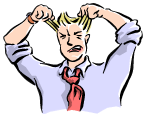
-
I don't have time to do this!
Working on your main concern, taking notes on what worked and what didn’t might
seem time consuming, but remember that it is well worth the effort. The work you
put into improving your quality of life will be rewarding. Sometimes it requires some
patience, as it is not necessarily something you will see change overnight.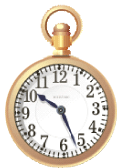
-
Example
Challenges Kelly faces with her plan
The doctor has recommended that I read more about chronic pain, but I find
it hard to sit for a long period of time.Also, when I feel like I have enough energy to do things, I would rather
clean the house, play with my kids and go shopping then sit down and read.Kelly gets more help
I don’t think there is any need for me to call health professionals for help on
this subject. But I have asked my sister to help me read the documents and
then she summarizes it for me. After reading about chronic pain I feel like I
understand it more and if I have any questions I will just ask my doctor
during my appointment.



-
Worksheets
Click on the book icon below to access the worksheets for this section. Remember all the worksheets, checklists, diaries, and pain scales inserted in the chapters are for your use only.. If you would like advice or want to show these to a health professional, please feel free to bring a copy of your next appointment at the Pain Clinic.
For some challenges in your life you may need to call for help. You can click on the phone icon at the lower left of the website to access help phone numbers.

PACE - Evaluating Your Plan
-
How did your plan work?
This is the final step in PACE – Evaluating your plan. Just like using a scale, weigh out how successful the plan was in dealing with the problem you chose to work on.
Reading about chronic pain and doing the activities required in this chapter may have brought up some concerns that you have in your life. You might even
relate to some of the examples in this chapter. Now look at the concern you identified and worked on throughout this chapter. Did you plan work? Do you see some improvement?
It is important to look at the things that did work and to remember not to try to fix everything all at once. Some things may take a little longer to work on than others, depending on the problem.
Click on the video for more about evaluating your plan

-
How will you know if you need to modify your plan?
Try for a week or two and track how well your plan is working. At the end of every day, write down what is working and what isn’t.
Reward yourself for profess as often as you can. Remember that changing behaviours, especially when you are in pain and feeling tired and stressed can be hard. If you persist you will see rewards.
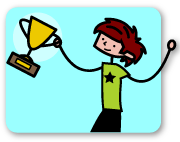
-
Different ways of keeping up with your plan in your everyday life
Good job for getting this far! Now that you have done all the steps necessary to work on the problem you picked to work on, it is important to find ways of applying them in your everyday life.
Asking your support network, like your friends and family, to help motivate you with your plan is a great idea.

-
Example

Kelly evaluates her plan
I think that my plan went well. Every since I have been going to the pain clinic,
I’ve learned a lot about how chronic pain works. I also think that my plan to
ask my sister to help me go through the references has also really helped me
to better understand my condition.
-
Worksheet
-
Example 2

How Kelly will stay on track
I plan on reading more about chronic pain and considering taking part in
research studies to help health professionals find more answers about
chronic pain. I am also planning on participating in group sessions, designed
for people who suffer with chronic pain, where the lectures are about chronic
pain and ways to improve quality of life. I think that reading about chronic pain
and getting involved in studies and group sessions helps me understand my
condition and reminds me that I am not the only one going through this.
-
Worksheet
Checklist
The purpose of the chapter checklist is to give you the opportunity to express any additional concerns you might have that may not have been covered in the chapter reading material or worksheets.
The checklists are for your use only; however, should you feel the need to discuss any of your responses, please bring a copy to your next Pain Clinic appointment.
If you are experiencing a high amount of distress, please click on the help phone icon at the lower left of the website.

Pain Scales
The purpose of a pain scale is to help rate pain by using the numbers on a scale
from 0 to 10. This number is useful to note in a pain diary to keep track of pain
levels over time.
The pain scales are for your use only; however, should you feel the need to
discuss any of your responses, please bring a copy to your next Pain Clinic
appointment.
Click on the icon to the right to access the pain for this section.
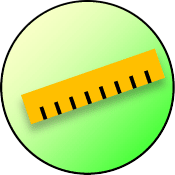
Resources
If you are interested in learning more about subjects discussed in this chapter, please consult the following references. If you need help finding any of these resources please feel free to ask your coach for some assistance.
Check out the website below and on the next couple of pages for more information on the following subjects.
Addiction
• www.apahelpcenter.org/articles/topic.php?id=6
Gate Control Theory
• www.spine-health.com/conditions/chronic-pain/modern-ideas-gate-control-theory-chronic-pain
Conclusion
Congratulations! You are done the Pain Education chapter.
By finishing this chapter and completing all the worksheets you have learned
many skills. We hope that you have solved your problem using PACE and
have learned many new ways to tackle problems that you may have in the
future. You have put in a lot of work in this chapter so give yourself a pat on
the back.
Clicking the Next button will bring you to the table of contents for the next chapter – Pain & Tension – or you can go to a different chapter by choosing from the menu on the left hand side.

Introduction
Goals
P - Picking a Problem
A - Acting Upon the Problem
C - Challenges You May Face
E - Evaluating Your Plan
Checklist
Pain Scales
Resources
Conclusion
Pain Diary
Glossary
PAIN EDUCATION

